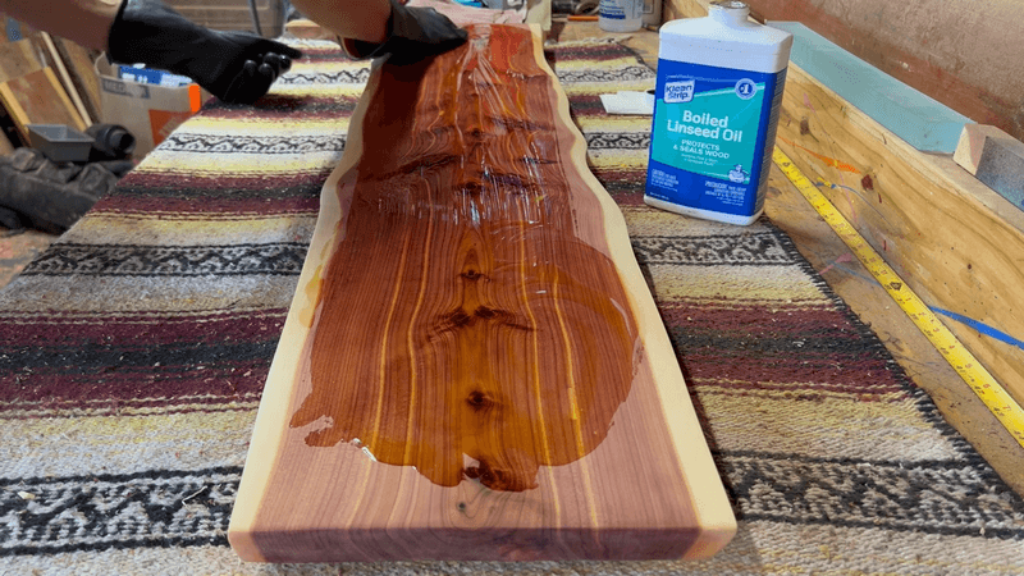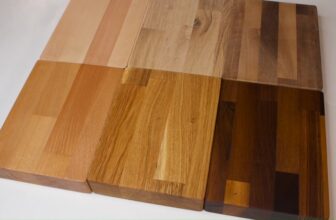For centuries, linseed oil has reigned as one of the most sought-after finishes for wooden items like furniture. Derived from flax seeds, this protective coating can bring out both light and dark woods’ natural beauty while protecting them against water damage, scratching, or other wear and tear. Linseed oil is a timeless finish that takes little effort to apply but will last your wood pieces for years with proper maintenance! Let its unique radiance revive your furnishings today!
Advantages of Linseed Oil as a Wood Finish
Linseed oil is a natural solution for wood finishing that offers many advantages. It deeply nourishes the wood, providing flexible protection that is waterproof and abrasion resistant. This finish also resists liquids such as water and alcohol and enhances the natural color of the wood. Linseed oil brings out the depth of the wood color and texture in wood grain, adding a unique beauty to any project.
Applying linseed oil is simple and straightforward; it can be applied with a brush or cloth, wiping into the wood following the direction of the grain. Boiled linseed oil is also an economical option for those looking to get great results on a budget.
Overall, linseed oil provides an excellent finish for all types of woodworking projects. Its flexibility allows it to be used on both interior and exterior surfaces, making it a versatile choice for any application.
What is Boiled Linseed Oil and its benefits?
Boiled linseed oil is a type of linseed oil that has been heated with metallic salts or additives to make it dry faster. This makes the finish harder and more durable, making it suitable for outdoor furniture and other items that are exposed to harsh conditions. It also helps to protect your wood from UV damage, making it ideal for use on decks, docks, and other outdoor surfaces. Boiled linseed oil can be slightly more expensive than regular linseed oil but offers a longer-lasting finish.
Raw vs Boiled Linseed Oil
Raw linseed oil is pure, unheated linseed oil. It can be used on a variety of wood types but will take longer to dry than boiled linseed oil and may require more frequent reapplication. Boiled linseed oil has been heated with metallic salts and other additives, making it harder, more durable, and faster drying. It is better for outdoor surfaces and will last longer than raw linseed oil.
No matter which type of linseed oil you decide to use, it is important to follow the manufacturer’s instructions regarding application and maintenance. With proper care, your wood projects will look great for years to come!
What is Linseed Oil Alternatives?
Linseed oil has many advantages, such as its ability to penetrate deep into the wood grain, making it an ideal choice for furniture and other wooden items. However, there are some drawbacks to using linseed oil, such as its tendency to darken over time and its slow drying rate. Fortunately, there are several alternatives to linseed oil that offer similar benefits without drawbacks.
Organic options such as walnut oil, pure tung oil, and mineral oil are all great alternatives to linseed oil when it comes to finishing wood surfaces. Walnut oil is a popular choice due to its ability to penetrate deep into the wood grain while providing a beautiful finish. Pure tung oil is another great option that provides excellent protection against moisture and UV damage while creating a beautiful sheen on finished surfaces. Mineral oils are also effective at protecting wood surfaces from moisture and dirt while providing a glossy finish.
For those looking for synthetic alternatives, products like Danish Oil, Teak Oil, Tru Oil, and Beeswax can provide similar results without the drawbacks of linseed oil. Danish Oil is especially well-suited for outdoor furniture due to its resistance to water damage and UV rays while still providing a beautiful finish. Teak Oil is another great option that provides excellent protection against moisture while creating an attractive sheen on finished surfaces. Tru Oil is also an effective alternative that offers superior protection against wear and tear while creating a glossy finish on wood surfaces. Finally, Beeswax can be used as an alternative for those looking for an all-natural solution that will provide a protective coating with minimal effort required for application or maintenance.
How to apply Linseed Oil?
To prepare a surface for a linseed oil finish, you must ensure the wood is free from dust and dirt. Begin by wiping down the wood with a damp cloth or rag to remove any loose particles. Be sure to use circular motions and go with the grain of the wood so as not to create scratches. Once finished, allow the wood to dry completely before applying any oil.

Before applying your linseed oil, you must mix it properly. Use a ratio of three parts oil to one part mineral spirits or turpentine, stirring until mixed thoroughly. This mixture will provide the right consistency and depth of color without making your surface overly greasy or sticky.
Once your mixture is ready, dip a lint-free cloth into it and wipe it onto the surface of your wood in an even layer going with the grain. Depending on how absorbent your wood is, you may need more than one coat for full coverage; be sure to wait until each layer has been absorbed before adding another.
When finished, allow your linseed oil finish to dry for at least 24 hours before handling it. For best results, you can add additional layers of linseed oil every few months to extend its life and keep it looking its best. Additionally, avoid getting water on your wooden surfaces too often and always clean up spills immediately; otherwise, they could damage the protective properties of your linseed oil finish over time.
Conclusion
Linseed oil is a great choice for woodworkers looking to bring out the natural beauty of their work. It offers protection against scratches, wear,s, and water damage while enhancing the look of any surface. Plus, it’s easy to apply and maintain; just be sure to follow all safety guidelines when doing so. With regular reapplication every few months, you can ensure your linseed oil finish looks good for years to come!




![Best Oil for Wood – [Reviews&Guide 2024]](https://woodworkersuniverse.com/wp-content/uploads/2022/11/oil-wood-1-336x220.jpg)

